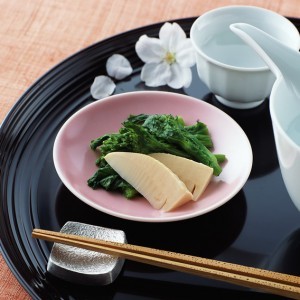
The Japanese diet is a low-carb, low-calorie diet developed by Japanese nutritionists whose diet allows you to lose about 10 pounds in 2 weeks.
Being overweight these days is paying many people for an incredibly fast lifestyle. We rush to live, we rush to work, we rush to eat. . . In addition, we often eat while fleeing and with what they say God sends. In the 21st century, God is increasingly sending us burgers, hot dogs, cheeseburgers, and sodas. . . "What to do? Don’t waste expensive minutes on lunch at a restaurant or what? - self-cooking in the kitchen when the business is on fire? Here, according to them, the whole successful world lives like this and nothing. "This excuse is used by a large proportion of people leading an active lifestyle. When your favorite jeans don’t fit, when you have to buy a longer belt, between a seductive skirt that fits snugly to your waist, and a nasty shapeless style with an elastic band, we choose a second, of course, time to come up with a new excuse. Well, really - all this is, of course, the result of malnutrition, and simply. . . thick bones. Yes, yes, and there is nothing to do, thick bone - it is such, very insidious. And as soon as it starts to grow - everything, it is impossible to stop it.
Now let's look at Japan, where there are huge opportunities, the highest level of technological development and an incredible pace of life. It would seem that if someone does not have time to stop for proper meals, so it is just like the Japanese. But, strangely, you rarely meet "big bones" among the Japanese population. . . So what's the secret then?
The point is, Japanese snacks are low-calorie foods, high in protein, and almost free of fat and "bad" carbohydrates. And the basic principle of the oriental food tradition is moderation. This is why Japanese cuisine is called one of the healthiest foods for the body.
Taking into account the peculiarities of the Eastern diet tradition, a balanced and extremely effective diet called Japanese has been developed. In fact, the menu on this diet is virtually non-traditional Japanese cuisine. But there is also the combination of protein, fat and carbohydrates, which is needed precisely for the body to get everything it needs without provoking, at the same time, a "thickening" of the bone. There are several diet options, but the most popular is the Japanese salt-free diet for 14 days. A two-week proper "Japanese" diet will help "thick bones" lose more than 10 kilograms more and will effortlessly maintain the result for several years.
The essence of the Japanese diet
Those who choose to go "Japanese" will need to be patient and give up their usual eating routine for two weeks. Diet may prove to be quite a challenge for many, but the effects will soon be felt. But amazing results will remain for several years. In just two weeks, the "Japanese" regimen - and ten kilograms (sometimes even more - it all depends on the initial weight).
So what's the main secret? Why is a Japanese diet for a week better than other diet regimens for weight loss? How wonderfully does it help to lose weight even for those who have tried many other diets themselves unsuccessfully?
Everything is carefully selected products in the diet menu - they are combined to speed up the metabolic process as much as possible. That is why it is so important to strictly follow all instructions, eat only what is prescribed, and not "improve". its other products, even if at first sight they appear to be completely interchangeable. It is also not recommended to change the menu days.
For many women, their level of "hunger" is important when choosing a diet, because not all are able to fight against the will of the samurai against their desires, especially the old instinct of all living beings - hunger. That's why the fact that a two-week Japanese diet without salt is not a "hungry" diet. By adhering, you won’t have to chew one cabbage for weeks and drink low-fat kefir, cursing yourself, your overweight, and those who have come up with a diet. The Japanese menu is a place for interesting and delicious recipes. This diet will especially appeal to those whose breakfast is usually made only from coffee. Meat and fish lovers will not see anything heavy in it. This is the best diet for them.
The essence of the Japanese diet is easy to explain in just two words - slowness and efficiency.
"Japanese" is a low-calorie protein fiber diet. Carbohydrates, which are reduced to a minimum in the daily diet, force you to lose weight faster - by demanding energy, the body begins to process its fat reserves into joules. But it’s important to remember something else: the Japanese diet will not allow you to saturate the body with the full range of vitamins and minerals. Therefore, it is strictly forbidden to follow a diet for longer than prescribed (up to 14 days) in order not to complete a weight loss course in a hospital bed.
And if you want to feel like a real Japanese, you can try Japanese sticks instead of forks and spoons, traditional for Europeans. Not only will they convey the fabulous spirit of the Land of the Rising Sun, but they will also teach you to eat in small pieces. By the way, many proponents of diets know this trick. An unhurried meal can deceive the body and make you feel full even after very small meals. This should really teach the Japanese to lose weight.
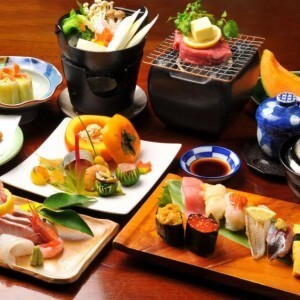
Japanese Diet Types
The huge popularity of the Japanese diet among women around the world has led to several variations of this weight loss system. First of all, there are known diet options:
- Japanese diet without salt for 7 days;
- 13 days (most commonly used diet);
- 14 days (unlike the previous 13-day diet for only one day);
- Japanese with green tea;
- Naomi Moriyama diet.
Supporters of each of these techniques call their favorite version "real" Japanese. In addition, many mines have already been broken in disputes over diet authorship. Some say the Japanese nutritionists invented it, others claim the system has nothing to do with the East. Who is the author of the Japanese diet, the most important thing is that it works. And its effectiveness has been experienced by millions of donuts across the planet.
The Japanese diet slimming menu is a food with minimal calories, carbs and salt, spices, sugar and sweet confectionery, as well as any alcohol, so the diet is considered strict. This contributes to the rapid breakdown of fat in body fat as the body experiences a stressful situation and is forced to burn its own fat and calories.
Diet menu for 7 days
The 7-day Japanese diet is an easy version of the traditional Japanese diet, but at the same time, the 7-day diet is the basis of the whole diet.
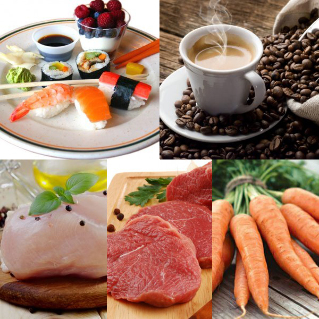
Expected results: 3-5 kilograms left in the past.
Disadvantage: The longevity of the result is not guaranteed because the body has not yet been able to adapt to the new metabolic system.
1 day
Daily calorie intake: 700 kcal.
Required products:
- black coffee;
- chicken eggs;
- fresh cabbage (Beijing cabbage / white cabbage);
- tomato juice (ideally freshly squeezed);
- non-greasy fish.
Breakfast:
- Black coffee - it is better to prefer espresso, but better to forget about sugar.
Lunch:
- boiled chicken eggs (possible 2 pcs. );
- "Japanese" salad - fresh cabbage and a little vegetable oil, no need to add salt;
- A glass of tomato juice.
Dinner:
- steamed fish - ideal for hake, cod, fins (portion not exceeding 200 grams);
- Japanese salad.
Day 2
Daily calorie intake: 1000 kcal.
Required products:
- coffee;
- breadcrumbs;
- fish (fatty species);
- cabbage;
- vegetable oil;
- beef;
- kefir.
Breakfast:
- coffee;
- Rusks - Take a small one weighing about 30 grams.
Lunch:
- Fish, fried or stewed - to diversify and supplement with fatty acids, it is better to give preference to catfish, salmon, black halibut. Not more than 150 grams in total;
- "Japanese" salad.
Dinner:
- beef - boil about 200 grams. Consumption without salt;
- Kefir - You can skim a cup of no more than 200 grams.
Day 3
Calories in the daily diet: 1000 kcal.
Required products:
- coffee;
- zucchini / parsnips;
- apple;
- chicken eggs;
- veal;
- cabbage;
- Vegetable oil.
Breakfast:
- Black coffee - don't forget about the sugar moratorium.
Lunch:
- zucchini (large enough) or parsnip root (also large) - brown in vegetable oil (do not use flour or dough for baking, salt is also prohibited);
- apple - don't despair, it is advisable to limit yourself to one fruit.
Dinner:
- boiled chicken eggs - 2 pcs;
- boiled veal - limit your appetite to 200 grams of a piece prepared without salt;
- "Japanese" salad.
Day 4
Daily calorie intake: 1000 kcal.
Required products:
- coffee;
- carrots;
- hard cheese;
- chicken egg;
- apples.
Breakfast:
- black sugar-free coffee.
Lunch:
- carrots - boil, it is allowed to take 3 larger roots;
- some cheese - choose from hard varieties, limit to 20 grams;
- raw chicken egg - one is enough.
All 4-day lunch ingredients can be combined into one dish, a salad, if desired.
Dinner:
- Apples - Multiple fruits are allowed.
At this point, the feeling of hunger will not be as strong as it used to be. Fullness occurs after small portions of food.
Day 5
Daily diet calories: 800-1000 kcal.
Required products:
- carrots;
- lemon juice;
- marine fish;
- juice;
- fruits.
Breakfast:
- Carrot and lemon juice - grate the vegetables and season with the juice. You cannot add sugar. Breakfast and coffee are also excluded on this day.
Lunch:
- fried fish - take about 350-400 grams, variety - any from the sea;
- tomato juice - it would be fairer to use fresh, prepared by yourself. Volume - no more than 200 grams.
Dinner:
- Fruit, but under no circumstances should you consume, especially at bedtime, any variety of grapes or bananas. They will erase all the results achieved so far.
Day 6
Calories in the daily diet: 900-1100 kcal.
Required products:
- coffee;
- chicken fillet;
- green cabbage;
- carrots;
- vegetable oil;
- chicken eggs.
Breakfast:
- black sugar-free coffee.
Lunch:
- chicken fillet - limit the portion to 500 g, take the meat without skin. Boil in water without adding salt;
- Salad - On this day, traditional "Japanese" salads can be improved by adding grated green carrots.
Dinner:
- chicken eggs - boil 2 pcs.
- Carrots (you can also pick up big ones) - grate the green vegetables, season the salad with a small amount of vegetable oil (maybe olive oil).
Day 7
Daily calorie intake: 700-800 kcal.
Required products:
- tea
- ;
- fruits;
- beef;
- eggs;
- cabbage;
- Vegetable oil.
Breakfast:
- tea - it is advisable to choose good green varieties, which are rich in useful antioxidants.
Lunch:
- Beef - Boil a piece of about 200 grams. Do not use salt or other spices when cooking;
- Fruit - On the last day of your diet, you can treat yourself to a dessert. But do not forget about the ban on the use of bananas and grapes.
Dinner:
On this dinner day, you can choose any of the previous days ’dinner options as a reward for endurance. For example, choose a version of beef, egg, and cabbage salad seasoned with olive oil.
For some, this will end the diet. For those who opted for longer Japanese versions, Day 7 is just a work-life balance for changing themselves.
For those who aren't used to eating on a calorie count, "Japanese" may seem like a pretty tough way to throw at first. But the discomfort will be noticeable only in the first few days - then the body adjusts to small portions of food, begins to eat faster. After 5 days of a new diet in the body, the first stage of restructuring begins to speed up metabolism - the main goal of any diet is to lose weight, eliminate excess fluids, disappear edema. For best results while running a diet, you can take an anti-cellulite massage course.
Japanese diet for 13 days
The 13-day Japanese diet is the most popular. This version is considered a completed weight loss course.
Expected results. If you are ashamed to follow all the instructions, at the end of the 13-day day, you will lose about 10 kilograms and about 30 cm in volume (sometimes more).
What's different from the 7-day option? In fact, it is a sequel to the lightweight "Japanese" version. This means that you will have to go through 7 days of "Japanese" life, and start on day 8 again, repeating the days from the first to the sixth.
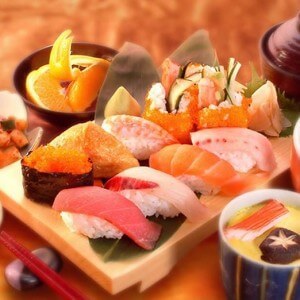
Japanese diet for 14 days
The 14-day Japanese diet version was also based on a 7-day menu, albeit with nuances. The main difference from the two previous options is that in the first week you have to strictly follow the 7-day menu, and in the second - to eat according to the same program, but in the opposite order. This means that the diet of the eighth day will correspond to the diet of the last 7 days, the ninth day, the diet of the 6-day menu, and the tenth to the 5-day menu. . . And according to this principle, continue until the end of the second day for weeks. Therefore, complete the last 14 days of the diet with the first 7-day "Japanese" version of the daily diet.
From day 8 of the diet, the body activates the detoxification process, and in the intercellular diet without salt, excess fluid is removed, completely eliminating edema. It is important that during the second week of the diet, the body gets used to a new metabolic rate. As a result, even if you switch to a normal diet (normal - this does not mean eating in the pools again for your future sleep, but you also do not have to starve), the body will not gain weight, on the contrary - fat will be burned as fast as in the diet. This amazing effect will last for about 2 years. But provided the diet was maintained correctly. Those who have already experienced "Japanese" work claim that it will take a year-long diet, the weight continues to be adjusted downward. If you repeat "Japanese" again (but not earlier than six months after the first course), you can really get rid of 20 kg of excess weight in a year with virtually no effort.
Diet and salt
Have you ever wondered why there is a taboo about salt in almost every more or less effective diet? The thing is, according to experts,
1 gram of salt retains a full liter of fluid in the body.
And that’s no more than one pound of overweight. In addition to false overweight, because salt accumulates weight not due to the fat layer but due to fluid stagnation, excessive salt intake causes other problems in humans. Even a few days when a salt-free diet can lower blood cholesterol and improve vascular status.
Of course, it is not possible to completely remove salt from consumption and it cannot be done. But the "Japanese" menu contains products that already contain a certain amount of salt - sufficient for the normal functioning of organs. In particular, organic salts are found in some vegetables, fish, meat. During the diet it is impossible to eat canned vegetables, smoked meat, semi-finished products - they all contain quite a large amount of table salt.
Green tea
In addition to the classic version of the Japanese diet, the menu also has an option to replace green tea with coffee. Many nutritionists believe that this "Japanese" variant is more beneficial to the body.
Given that the basis of the Japanese diet is a protein diet, it is important that green tea (especially in the Japanese form) has a large supply of protein, and in terms of nutritional value, this drink is not inferior to legumes.
The second plus in favor of green tea is that it contains antioxidants that protect the body from toxins and promote toxin removal.
Third, and perhaps most important in losing weight, the unique chemical composition of green tea helps speed up your metabolism by 4 percent (60 calories are burned more daily than without green tea).
The Japanese green tea diet lasts for 2 weeks. The components are practically the same as in the classic "Japanese" version, although there are still some great features.

Comprehensive Japanese Green Tea Diet Menu
1 day / 14 days
Breakfast:
- green tea - glass; Curd without fat - 150 g.
Lunch:
- cabbage stewed in butter - 300 g;
- boiled chicken eggs - 2 pcs. A glass of fresh apples
- .
Dinner:
- vegetables in salads or steams;
- boiled or steamed fish - 200 g.
Day 2 / Day 13
Breakfast:
- green tea - glass; hard cheese
- - 2 pcs.
- toast or diet cookies.
Lunch:
- cooked or green cabbage seasoned with oil;
- boiled fish;
- green tea - glass.
Dinner:
- vegetable salad
- ;
- boiled veal - 300 g;
- boiled chicken egg - 2 pcs. ;
- Japanese green tea - glass.
Day 3 / Day 12
Breakfast:
- Japanese green tea - a cup;
- dietary cookies.
Lunch:
- boiled zucchini / cauliflower;
- apple - 1 pc.
- green tea - glass.
Dinner:
- yellow-green vegetable salad;
- boiled veal;
- boiled chicken eggs - 2 pcs.
Day 4/11 Day
Breakfast:
- Japanese green tea - a cup; Curd without fat - 150 g.
Lunch:
- green grated carrots with olive oil;
- chicken egg;
- sugar-free green tea.
Dinner:
- green tea;
- fruits (not grapes and bananas).
Day 5/10 Day
Breakfast:
- green tea - glass;
- toasts with jam - 2 pcs.
Lunch:
- boiled fish - 200 g;
- tomato juice - a glass.
Dinner:
- green vegetable salad; hard cheese
- - 2 pcs.
- green tea - glass.
Day 6 / Day 9
Breakfast:
- rye flour toasts - 2 pcs.
- Japanese green tea - glass.
Lunch:
- raw cabbage / cooked with olive oil;
- cooked chicken without skin - 400 g;
- Japanese tea - a glass.
Dinner:
- carrots (cooked / green);
- boiled eggs - 2 pcs.
- Unsweetened green tea.
Day 7/8 Day
Breakfast:
- Japanese tea - a cup;
- cheese (any of the hard varieties) - 2 small pieces.
Lunch:
- boiled veal - 200 g;
- cooked / cooked vegetables;
- green tea without a glass.
Dinner:
- fruits - any;
- Japanese green tea - glass.
The effectiveness of this Japanese diet variant is enhanced by the green tea included in the diet, and the variety and deliciousness of the menu makes it easy to move through the period of food restrictions. Repeat the diet - not earlier than after a year. And so the results achieved in two weeks lasted longer, in the future it is advisable to follow a healthy lifestyle, quit tobacco and limit alcohol intake and monitor proper nutrition in daily life.
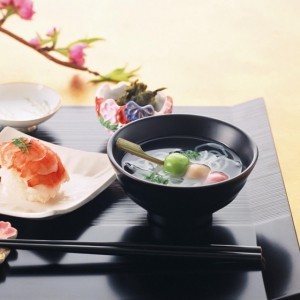
Main Dishes
Whatever Japanese diet you choose, any of them will have traditional cabbage salad and cooked meat. These dishes can be prepared in a variety of ways. However, keep in mind that they are part of the diet, and the cooking process is a little different from cooking. regular meals.
Making suitable Japanese salads:
- Take raw or slightly cooked cabbage (common or Chinese cabbage).
- Finely chop.
- Gently squeeze out excess moisture.
- Season the prepared salad base with olive or sesame oil.
- Stir and bring to a boil.
Dietary boiled meat
- Prepare the meat. If it’s chicken, remove the skin. Peel the veal or beef from the film.
- Rinse thoroughly with cold water.
- Put the meat in a pot, pour very cold water.
- After boiling, drain the water, wash the meat and refill with water.
- Cook until soft without adding spices.
Tip: Add onions, small carrots and a little greens to the water to improve the taste during cooking. Many people are interested in how to replace beef in the Japanese diet. It is allowed to add young veal to the menu, which is easier to digest, but at the same time has the same chemical composition as beef.
How were the products selected?
Almost all sources state that the list of foods allowed in the Japanese diet is special and does not need to be changed. So what is the secret to this particular diet?

Coffee. Many people start their day with this aromatic drink. A cup of black ground coffee is served as a traditional breakfast and according to the Japanese diet.
What are the benefits?
Sugar-free black coffee, which has a refreshing effect, helps the body wake up faster and start the process of burning calories. Because the morning diet does not provide food, the body begins to produce energy by burning its own reserves - subcutaneous fat.
You can diversify the taste of your morning drink by adding vanilla, dark chocolate or citrus fruits. Add additional ingredients in small doses.
Cabbage. This vegetable was chosen for the diet not by chance. In addition, cabbage is one of the vegetables with the so-called "minus" calorie content (the body spends more energy on digestion than it receives).
What are the benefits?
Cabbage, white or Chinese cabbage, strengthens blood vessel walls, lowers cholesterol and cleanses the intestines. For people prone to bloating, it is better to boil the cabbage slightly before consumption.
Olive oil. A teaspoon of oil added to salads normalizes metabolism, has a positive effect on the liver, kidneys and pancreas.
Eggs. This product has good nutritional properties and is an excellent source of protein, fat and carbohydrates, as well as many vitamins and minerals.
Tomato juice. Nutritionists call this one of the healthiest. The unique chemical composition of tomatoes protects against cardiovascular and oncological diseases, accelerates metabolic processes in the body, improves mood and has a positive effect on the nervous system. It is best absorbed without salt, which is especially important when following a salt-free diet.
Fish. Known for its ability to quickly remove toxins and toxins. It is a valuable source of protein and amino acids. It acts on the body as a preventive measure against stroke.
Fruit. Generally, dietary carbohydrate intake should be significantly reduced. But it is completely undesirable not to include in the diet - they are an important source of energy. The body receives the "right" carbohydrates along with the fruit. But from the diet it is better not to include bananas and grapes that are high in sugar.

Naomi Moriyama Diet
It's hard not to believe in the effectiveness of the Japanese diet, especially for those who have nevertheless decided to try it for themselves. But sooner or later, many people ask themselves: why is this diet called a “Japanese diet” when there is practically nothing on the menu? from traditional dishes to the country of the rising sun. But there is an explanation for that. According to one version, this original diet is the development of nutritionists at the Japanese clinic Yaelo.
But there's another "Japanese" version created by marketer Naomi Moriyama in response to French author Mireille Guiliano, author of "Why French Don't Fat. "In fact, according to research, the French are not quite slender in the world. The least obese people live in Japan - only 3 percent. In France, meanwhile, donuts are about 11 percent. , And in the US - more than 32 percent. So Naomi gathered the nutritional principles inherent in her people and adapted them to her diet.
Food Rules from the Land of the Rising Sun
Easterners eat nearly 100 different foods a week, with total calories more than a quarter less than, for example, Americans ’weekly caloric intake. The only secret of Japanese harmony lies in a simple rule: fill the stomach 80 percent.
















































































